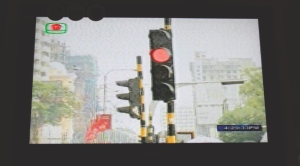Entertainment
Television in Bangladesh
Parvez Chowdhury
 The history of television is not that new in this region. It took about 30 to 35 years after its invention for television to actually become a household appliance in this region. In 1959, the first experimental television was started in Delhi, India, funded by UNESCO, but it was soon discontinued. Broadcasting resumed after 13 years in 1972. In the preliminary period, Prime Minister Jawharlal Nehru was not in favour; in his opinion, television was a luxurious commodity that would be the sole possession of the middle class. He thought radio was a more appropriate media for a developing nation like India. Television broadcasting began in November 1964 in West Pakistan, and December 1964 in East Pakistan.
The history of television is not that new in this region. It took about 30 to 35 years after its invention for television to actually become a household appliance in this region. In 1959, the first experimental television was started in Delhi, India, funded by UNESCO, but it was soon discontinued. Broadcasting resumed after 13 years in 1972. In the preliminary period, Prime Minister Jawharlal Nehru was not in favour; in his opinion, television was a luxurious commodity that would be the sole possession of the middle class. He thought radio was a more appropriate media for a developing nation like India. Television broadcasting began in November 1964 in West Pakistan, and December 1964 in East Pakistan.
The character of Dhaka Television was set the very first day of its transmission: while the notorious military ruler, Ayub Khan, was inaugurating the Dhaka Centre, a mass revolution was taking place against him at Paltan on the other side, but the fact was totally absent from the national news of that date. This approach continues to this day; state television being the government's propaganda machine; an isolated media has been its defining characteristic.
In the mid 1980s, economic changes took place with rapid political ramifications, making a huge impact on the media world too. The wave of that media revolution stroked not only world culture but the society of south-east Asia. World media became concentrated in a few hands due to three main reasons: end of socialism, a gradually developing world market and rapid blooming of information and communication system.
Economic liberalisation made a direct impact on the capital-based media market, which ultimately created merchandising in India. Television did not remain an idiot box, but rather became, for the mass people, a bridge into a new world, gradually transforming their daily life, culture, society and they way people conceptualised their world.
Indian satellite channels had strong wings that helped them to fly over the global sky: 1) supporting financial system 2) well-built film industry 3) a large market. As an adjacent country of liberalised India, Bangladesh was soon impacted by the illegal entrance of cable network through the unguarded Bangladesh border. At that time, dish antennae were not allowed in Bangladesh, which was required for satellite television. This decision reflects the ignorance and negligence of the then Bangladeshi rulers about contemporary and modern technology. Only well-off families had access to a dish antenna – but illegally.
In 1992, a few small cable networks entered and Bangladesh Television started transmitting programmes of internationally known channels like CNN, BBC etc.
At that time, everyone was anxious about whether Bangladesh Satellite Channel would be eclipsed by overseas influences. The fear was not baseless, as even after starting of two three satellite channels, they failed to make any significant impact on us.
Despite all these limitations, Bangladesh satellite television started spreading, which ultimately increased cable market everywhere in Bangladesh but Dhaka based media market was also established gradually.
 |
The state television being the government's propaganda machine since independence. |
Ekushey Television started its journey in 2000. It had both terrestrial and satellite authority. Initially this was the first television channel to prove intelligence, intrepidity, perfect structural system and professionalism. As a result, within a very short time, Ekushey was not only commercially successful but became an expression of identity of all Bangladeshis living in different corners of the world. It created a class of rational audiences through its meaningful and realistic presentation. At the primary stage, it was successful in distracting our audiences from Indian channels and made them attracted to our own programmes. But when Ekushey Television stopped broadcasting from 29 August 2002, the newly flourished media market of this country was compelled to continue as a satellite-based market. As a result, the liberal attitude that had grown through Ekushey Television started becoming an amalgamation of uncertain visions. Political management began to centre on other capitalist market-based satellite TV channels.
In this connection, one thing is very clear that in maintaining a satellite channel, the impact of the approach of the relevant owners became very influential as reflected through the first and second phase of Ekushey Television.
Another issue to be pointed out is the power of the Indian satellite channels to attract not only Bangladeshi audiences but also Bangladeshi channels. However, one cannot simply blame the Bangladeshi satellite channels for this failure; our government facilities – or the lack thereof – are to be blamed as well. The proposal of not permitting terrestrial facility to any non government satellite channel in Bangladesh during the BNP-Jamaat coalition government was the first stumbling block. The organisational composition of Bangladeshi satellite channels is also very weak. People in the rural areas, moreover, are not very familiar with satellite facilities and are deprived of watching other channels because terrestrial facilities are unavailable and they must depend solely upon Bangladesh Television. Most people in the villages are too poor to be able to afford the luxury of satellite television. Whatever information, news, entertainment they get are from the state-owned television. Obviously this deprives a large proportion of the population from the satellite channels. It is high time that the satellite channels formulated editorial guidelines that will influence the government. The importance and influence of satellite channels cannot be denied.